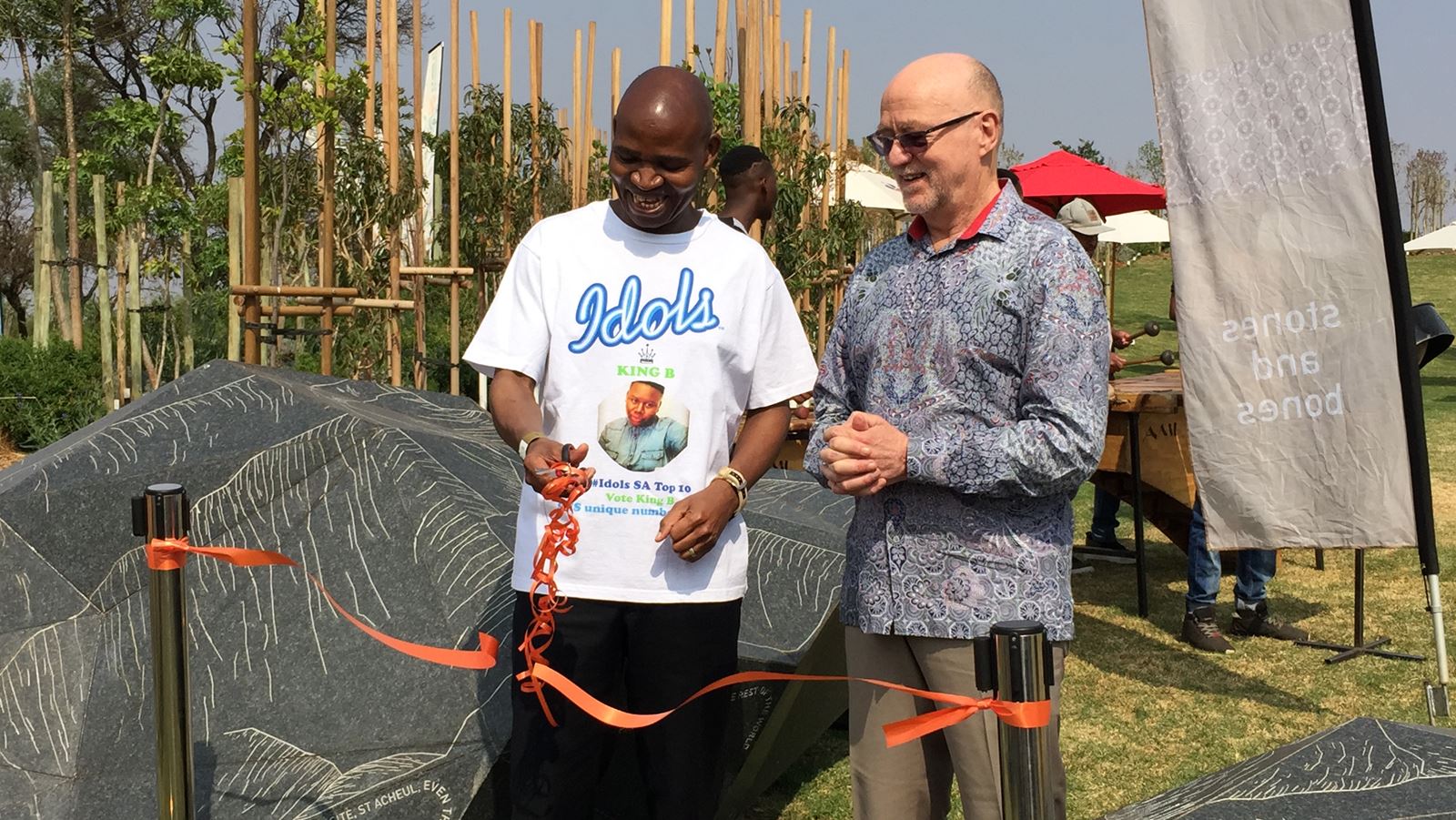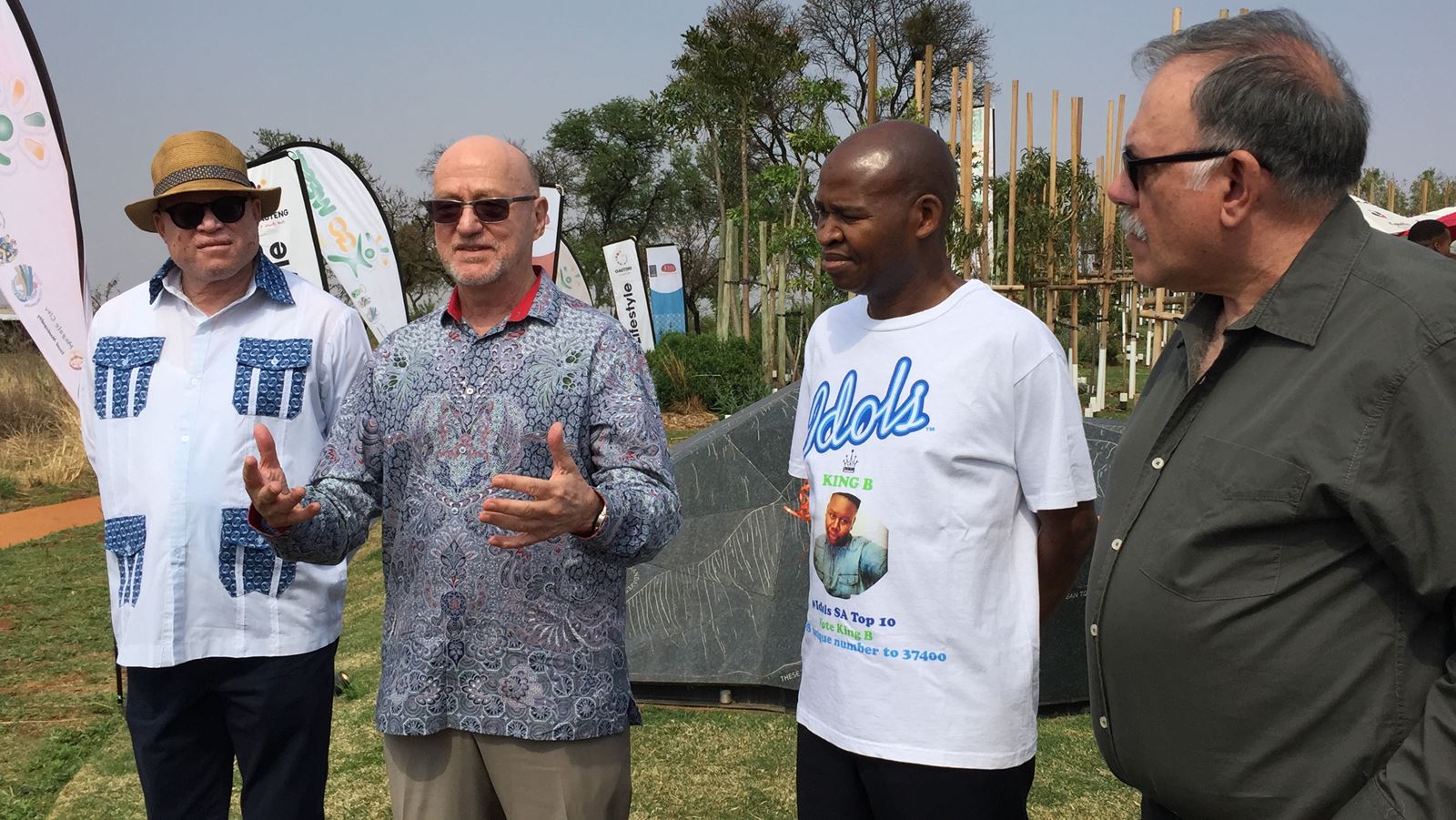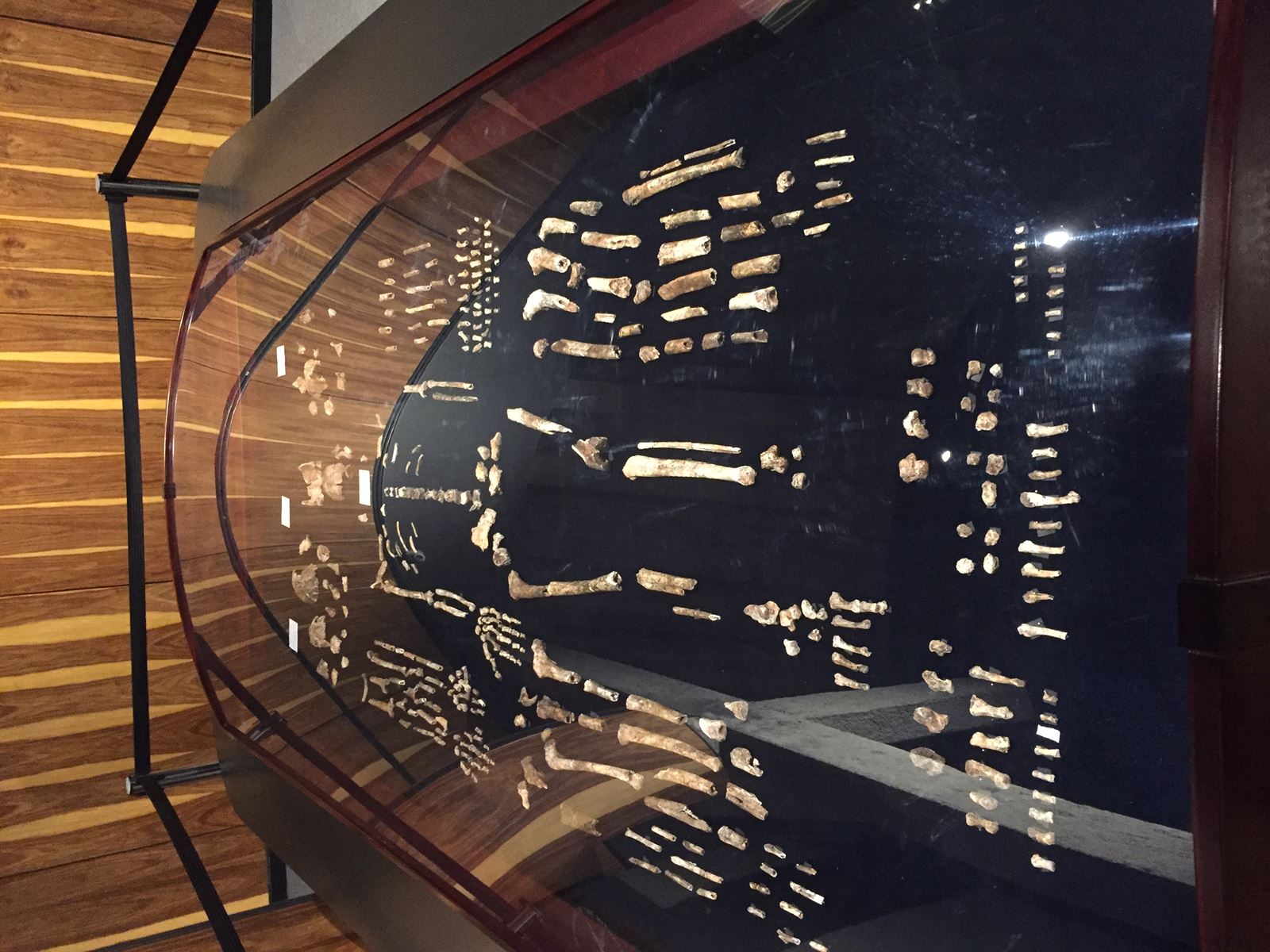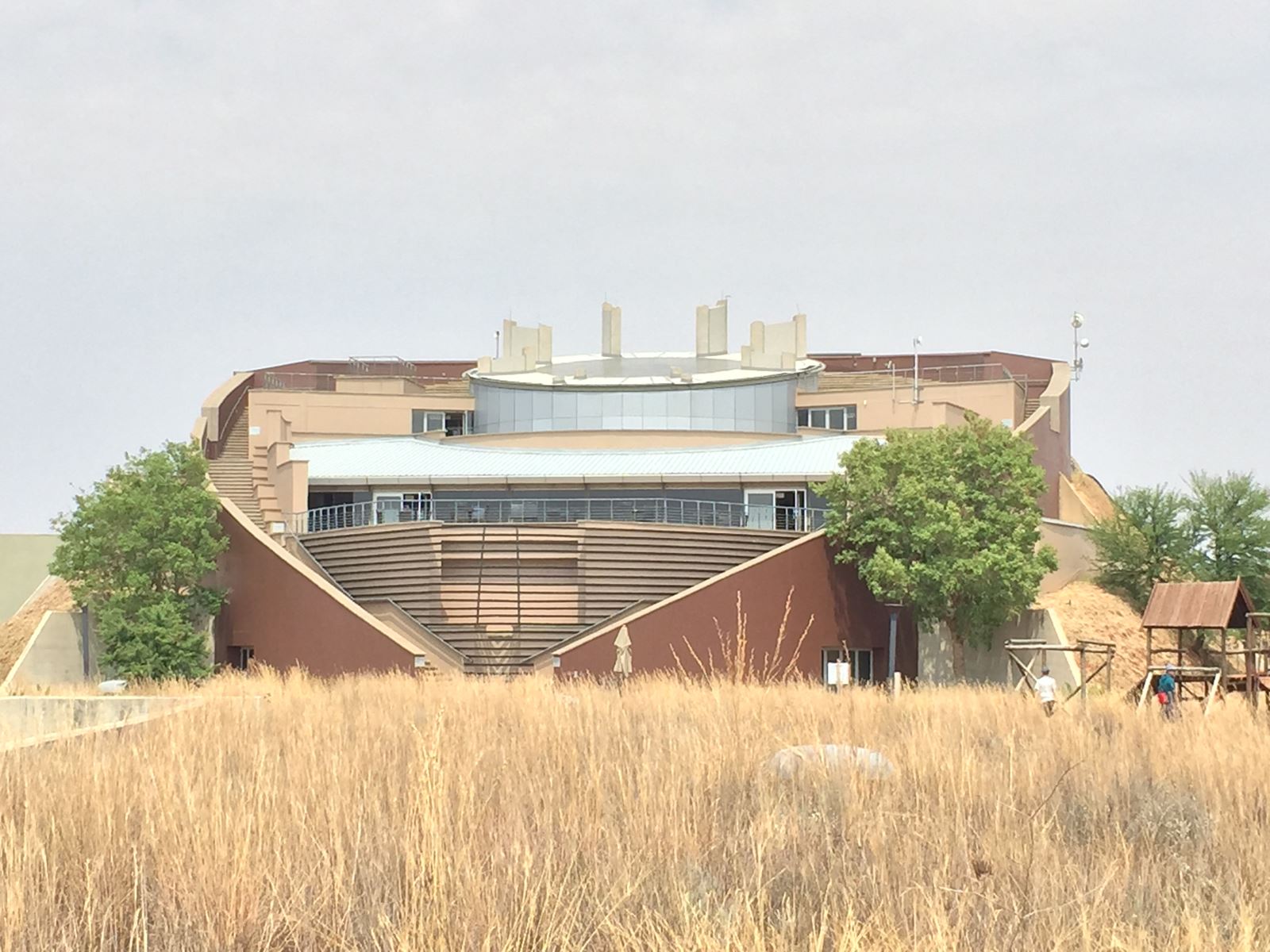Maropeng, the official visitor centre for South Africa’s Cradle of Humankind World Heritage Site, celebrated the country’s national Heritage Day on September 24 with the unveiling of the Human Impact picnic site at its new Stone Park.
Tourism Minister, Derek Hanekom, and Mayor of Mogale City, Patrick Lipudi, cut the ribbon across the giant granite stones – designed as stone tools – that serve as the entrance to Stone Park, and symbolise human endeavour and industry.

Mayor Patrick Lipudi cuts the ribbon alongside Tourism Minister Derek Hanekom.
Managing Director of Maropeng, Michael Worsnip, introduced the occasion, as well as Minister Hanekom, Mayor Lipudi, and CEO of the Cradle of Humankind and Dinokeng Project, Makhukhu Mampuru.

From left to right: Makhukhu Mampuru, Derek Hanekom, Patrick Lipudi and Michael Worsnip.
The site, a World Heritage Site, is of particular importance, as it represents the story of human development and how humans craft their environment to suit their needs. The park allows visitors to reflect on this, and can be used for picnics, concerts, weddings, gatherings or festivals. The latter was of particular significance on heritage weekend, as Maropeng hosted its first Cradle Colour Fest, celebrating the diverse cultures of the South African nation, and inviting visitors to celebrate their shared history and heritage, or experience the local cultural history.
The festival hosted appearances and performances by a number of local artists, musicians, fashion designers and dancers, and was a collaboration with a number of South African organisations including the SA Department of Arts and Culture and Gauteng Tourism.
The Cradle of Humankind is globally recognised as the world's richest hominin site, home to around 40% of the world's human ancestor fossils. It is also where the discovery of Homo naledi took place, fossils that scientists date from between 335 000 and 236 000 years ago.

Collection of preserved fossils, discovered on the site.
The Maropeng Visitor Centre and Sterkfontein Caves offer tourists the opportunity to explore the history of humanity, captured in preserved fossils in the museum, or explore the caves in which many of the fossils are found.

The Maropeng Visitor Centre draws a multitude of visitors purely by the unique shape of the building. The front and back of the dome represent the past and present, and how humans have evolved.






















